In September, yet another union bassist has reported his instrument destroyed in transit. Milton Masciadri of Local 148-462 (Atlanta, GA) reported that his rare 1690 Testore bass was smashed and its neck broken upon arrival in Little Rock, Arkansas, for a recital. Masciadri believes that careless Transportation Security Agency (TSA) inspectors are at fault. After checking it in, the instrument was sent to TSA for inspection. When it arrived in Arkansas, he discovered that TSA had failed to put back security belts that kept the instrument in place. As the airline would have had no reason to open the case, it is likely TSA is at fault. Masciadri is a professor at the University of Geogia.
Tag Archives: music

Stretches That Every Musician Should Do Before Playing
by Janet Horvath, author of Playing (Less) Hurt: An Injury Prevention Guide for Musicians available at musicdispatch.com
 Editor’s Note: In this article Janet Horvath suggests some stretches she devised to help musicians alleviate body stress. Always check with a physician before trying stretches, especially if you have an injury. Always stop any movement that causes pain.
Editor’s Note: In this article Janet Horvath suggests some stretches she devised to help musicians alleviate body stress. Always check with a physician before trying stretches, especially if you have an injury. Always stop any movement that causes pain.
When I was a young student I was criticized for moving too much when I played. “Don’t beat your foot! Don’t wiggle! It’s too distracting,” said my teachers. Unfortunately, these mantras were more important than just limiting comfort and self-expression. Although playing music is expressive and creative, we sought to quell the tendency to move and flow with the music. We were admonished to never “stick out.” As a result, we often sit like statues.
Studies today indicate that humans are born to move. Being static, still, and motionless is detrimental to our health. Static effort, or holding a position, is also much more strenuous on the body. Muscles tighten, blood flow is constricted, oxygen is not replenished, and waste products are not flushed out. Static positions make us tire sooner, and then we hurt. On the other hand, we can engage in a dynamic movement for a long time because blood is replenished with fresh oxygen.
There are unobtrusive ways to reduce tension build up and give our bodies mini breaks. I have devised a series of moves I call Onstage Tricks™ to alleviate tension even while performing. The essential guiding factor is to do the opposite motion of the positions we are required to hold while we play.
Sitting properly is the first step. Make sure that you are sitting in the optimum position for your height and instrument. Your chair should be high enough so that your knees are lower than your hips. If you are diminutive, sit forward so your feet don’t dangle. Your weight should be forward with a slight lumbar curve in your spine and feet flat on the ground. Keep your shoulders down and facing forward. Avoid turning or twisting your torso, leaning left or right.
Starting with those targeting the top of the body, try some of the following moves during practice or performance, or whenever you have a few bars of rest. These exercises are effective even if you only have time to do them once. However, if you are able to do them more than once, it’s all the better.
The following are stretches that every musician should do before playing
For the neck:
- Keep your head erect and tuck in your chin gently. This is a very small movement.
- Tuck your chin as above. Keeping your shoulders relaxed and down, slowly turn your head to the right and look over your right shoulder; return to looking forward. Repeat, turning your head left, looking over your left shoulder.
- Again, start with a chin tuck. With shoulders relaxed and down, slowly tilt your head so the right ear is over the right shoulder. Return to neutral. Repeat on the left side.
For shoulders and pectorals:
- Do one big shoulder shrug bringing the shoulders toward the ears, while taking a deep breath. Relax, release your shoulders, and breathe out.
- Do one big shoulder circle. Bring your shoulders forward, then up toward your ears, then back opening your chest, and relax bringing your shoulders to normal. Repeat, reversing the direction of the circle.
- While keeping your shoulders down, squeeze your shoulder blades together.
- Clasp your hands behind your back, and while keeping your elbows straight, but not locked, pull your shoulders gently backwards.
For the arms:
- Let your arms uncurl often and hang by your sides. (If you must hold your instrument, do one arm at a time.) While keeping your elbows fairly straight, but not locked, turn your palms outward, with your thumbs pointing away from your body. Moving slowly, reach gently backward.
- Place your hand palm down on the chair behind you. While keeping your elbow fairly straight, but not locked, lean gently onto your hand, stretching the inner arm. Repeat with the other arm.
For the back, spine, and pelvis:
- Take a deep breath in and then empty your lungs. Now, contract your abdomen. Imagine pulling your belly button inward. Release.
- Roll your pelvis forward and back, putting your back into a “C” curve. Momentarily press your lumbar spine backward and then return to neutral. This is a very small movement. Rock from one gluteus to the other, side to side.
- Squeeze your buttocks and release. This can be done while standing or seated.
For the hips:
- Keep your feet on the floor and turn one knee inward as you sit, rotating the hip joint. Repeat with the other leg.
- Adjust the position of your feet often.
For healthy overall circulation:
- Keep your heels on the floor and lift your toes. Then, keep your toes on the floor and lift your heels. Do circles with your ankles.
- If you are able to, alternate playing seated and standing. While standing, avoid locking your knees; keep them slightly bent with feet apart. Avoid overarching your back and crouching or slumping forward. Keep your head and torso erect and face forward with shoulders down.
Awareness is the key to injury prevention. These and many more “moves” for musicians are displayed in my book. Make up some of your own as well, with the goal of maintaining fluidity and ease, while avoiding tightness and tension. You’ll feel better and you’ll play better too.
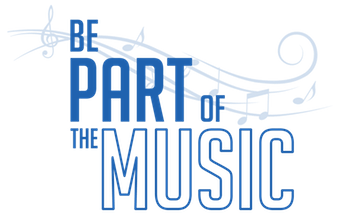
Be Part of the Music: A New Free Resource for School Music Teachers
 Music education advocate Scott Lang has launched a new music advocacy group called Be Part of the Music (www.BePartoftheMusic.com) to provide free resources to school music teachers, administrators, students, and parents. The stated goal of the organization is to recruit one million new students to American public school music programs. The free, customizable recruitment and retention materials, which currently include 45 documents and 27 videos are designed to help the community better understand the different ensembles and instruments that are available, along with the positive impact that music can play in the life of a child and the school community. Currently available materials are focused on elementary students, but future items will focus on retaining student interest throughout their teenage years.
Music education advocate Scott Lang has launched a new music advocacy group called Be Part of the Music (www.BePartoftheMusic.com) to provide free resources to school music teachers, administrators, students, and parents. The stated goal of the organization is to recruit one million new students to American public school music programs. The free, customizable recruitment and retention materials, which currently include 45 documents and 27 videos are designed to help the community better understand the different ensembles and instruments that are available, along with the positive impact that music can play in the life of a child and the school community. Currently available materials are focused on elementary students, but future items will focus on retaining student interest throughout their teenage years.
This new offering to also grow involvement in public school orchestra and chorus programs, is based on the successful Be Part of the Band program, which has increased enrollment in public school band programs by 20% across the nation.
“Music is the silver bullet that makes the school experience better,” says Lang. “Many studies prove that students involved in music programs have higher test scores, higher academic performance, and lower drug and alcohol abuse levels, just to name a few benefits. Our goal of attracting one million new music students is lofty, but we can reach it by adding just 10 students in each and every one of the country’s 100,000-plus elementary schools.”
Be Part of the Music sponsors include Yamaha Corporation of America, Jupiter Instruments, Fred J. Miller, French Woods Fine Arts Camp, NAMM, Music for All, American String Teachers Association, and the National Association for Music Education.
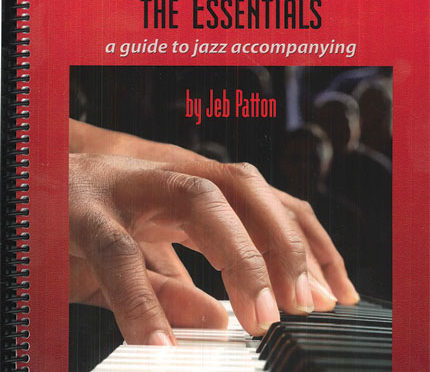
An Approach to Comping: the Essentials, a Guide to Jazz Accompanying
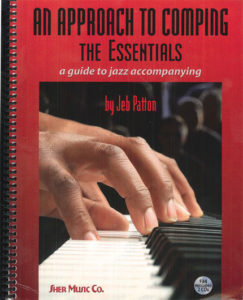 Comping is a term used to describe how a pianist (or other chordal instrumentalist) plays chords in a rhythm that propels and supports a soloist. Author and pianist Jeb Patton of Local 802 (New York City) says that this is the type of book he searched for when he first started playing jazz. It is meant as an aid to aspiring jazz musicians, uncovering some of the mysteries behind comping. It reveals what happens in the background—the groove, the backdrop, the rhythmic conversation, and the colors behind the soloist—and underscores the piano player’s role in comping. Two included CDs provide demonstration and comp-along tracks to help you learn techniques by playing along.
Comping is a term used to describe how a pianist (or other chordal instrumentalist) plays chords in a rhythm that propels and supports a soloist. Author and pianist Jeb Patton of Local 802 (New York City) says that this is the type of book he searched for when he first started playing jazz. It is meant as an aid to aspiring jazz musicians, uncovering some of the mysteries behind comping. It reveals what happens in the background—the groove, the backdrop, the rhythmic conversation, and the colors behind the soloist—and underscores the piano player’s role in comping. Two included CDs provide demonstration and comp-along tracks to help you learn techniques by playing along.
An Approach to Comping: the Essentials, a Guide to Jazz Accompanying, by Jeb Patton, www.shermusic.com.
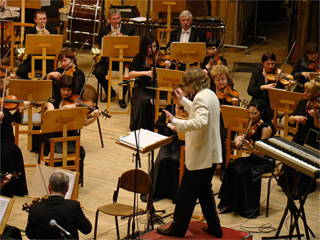
The Role of Orchestra Committees
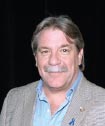 by Christopher Durham, Chief Field Negotiator, AFM Symphonic Services Division
by Christopher Durham, Chief Field Negotiator, AFM Symphonic Services Division
Employees who work under the terms of a collective bargaining agreement (CBA) are represented by a labor union that was authorized by the first employees who worked under the original agreement. When the union was established, the membership elected officers to handle the negotiation, enforcement, and administration of the agreement. Other union responsibilities and procedures are prescribed by either law or internal bylaw. The musicians who perform in orchestras elect orchestra committees and ancillary committees to assist the union in the negotiation, enforcement, and administration of the agreement.
This structure, while common in our union, is somewhat unique to the labor movement. Over time, symphonic bargaining units have assumed, through their various committees, a prominent role in the day-to-day governance of the agreements. A consequence of this expanded role should not be to disregard, ignore, or place the union in a subordinate role. The union, as the certified bargaining agent, has the legal responsibility to oversee the performance of the agreement as well as the liability for the action of its agents. It’s important to have an effective working relationship between a rank-and-file committee and the union in order to provide strength through communication and unity. The union is the pivot for members who may not work in the bargaining unit. It has important relationships in the greater community that, when properly networked, can make the difference by providing outside influence during times of hard bargaining.
Orchestra committees who seek the authority to administer the agreement must also acknowledge the responsibility and liability for decisions made under their watch. There is no hiding, denying, or abstaining from the same duty of fair representation that is expected from the union. Symphony orchestra committees are not your fathers’ civic or fraternal organizations, where you serve your time or complete your project and all is well. Representing the business interests of your colleagues and their families is a huge responsibility.
In all matters relating to the agreement, the committee must measure when and what to report to the membership. It is responsible for handling day-to-day business, including variances, and processing and investigating grievances in a timely and thorough manner. Committees must also bring experience to the bargaining table. They are responsible, by their recommendation, for directing the unit to accept or reject tentative agreements or final offers. Committee members don’t have the luxury to pick and choose the grievances that they want to handle nor to limit themselves to decisions that won’t cause confrontation. Conversely, the rank and file is well-advised to listen to the debate respectfully and to not attack a committee they have elected when it is serving in their best interest.

Richard Wagner: The Lighter Side
 This unique, entertaining, and eclectic book about Richard Wagner features a wide range of curious facts, lively anecdotes, and thought-provoking quotations relating to the man and his music. Author Terry Quinn presents hundreds of tidbits and features on each of the composer’s 13 operas and the challenges encountered in staging them. He explores Wagnerian directors, conductors, singers, key people in his life, as well as his dysfunctional family. The book is illustrated by colorful photographs, old and new, as well as reproductions of rare ephemera.
This unique, entertaining, and eclectic book about Richard Wagner features a wide range of curious facts, lively anecdotes, and thought-provoking quotations relating to the man and his music. Author Terry Quinn presents hundreds of tidbits and features on each of the composer’s 13 operas and the challenges encountered in staging them. He explores Wagnerian directors, conductors, singers, key people in his life, as well as his dysfunctional family. The book is illustrated by colorful photographs, old and new, as well as reproductions of rare ephemera.
Richard Wagner: The Lighter Side, by Terry Quinn, www.amadeuspress.com
The Year Leading up to TMA’s 20th Anniversary Conference
 by Tom Mendel, TMA President and Member of AFM Local 10-208 (Chicago, IL)
by Tom Mendel, TMA President and Member of AFM Local 10-208 (Chicago, IL)
Theatre Musicians Association (TMA) has been quite busy in the past year. I can think of no better way to demonstrate this than by writing about what the Executive Board and volunteer committees have been up to in the TMA’s year review.
2015 Juno Canada’s Music Awards in Hamilton, Ontario
by Daniel Calabrese, AFM Canada, Contract Administer

(L to R) AFM International Representative from Canada Allistair Elliot; Local 293 member Laura Cole; and AFM Canada Contract Administrator Daniel Calabrese
Every year since 1970, the Juno Awards have recognized Canadian musical artists and bands for their artistic and technical achievements in all aspects of music. This award show has grown in the past 45 years, becoming the biggest award show for Canada’s music industry.
For several days prior to the award presentations, events are held in the host city as part of “Junofest.” Local venues open their doors to host around 120 concerts by local and national artists. Hotels are filled with musicians, musician representatives, and music lovers from around the country for this annual tradition. Hamilton, Ontario, hosted this year’s Juno Awards. I was fortunate to attend Junofest, along with AFM International Representative from Canada Allistair Elliott. Together we witnessed some of the best musicians Hamilton has to offer.
Our trip to Hamilton began with a visit to Local 293, the Hamilton Musicians’ Guild. Local Secretary-Treasurer Brent Malseed and President Larry Feudo were great hosts, taking us to see the best up-and-comers, along with some of Hamilton’s well-known musicians. I was pleasantly surprised to see the amount of local talent in Hamilton.
One of those performers was previous Juno winner and long-time Local 293 member Rita Chiarelli. She is Canada’s most highly acclaimed female roots and blues artist. Chiarelli just released the soundtrack for her award-winning documentary, Music from the Big House. With one Juno Award and four subsequent Juno nominations, she is known across Canada as “the goddess of the blues.”

(L to R) AFM Canada Contract Administrator Daniel Calabrese, Local 293 (Hamilton, ON) Secretary-Treasurer Brent Malseed, Rita Chiarelli of Local 293, AFM International Representative from Canada Allistair Elliott, and Local 293 Executive Board Member Janna Malseed.
It’s no wonder Hamilton has hosted the Juno Awards six times. The awards provide an opportunity to celebrate Canadian music from the past year, not only on a national level, but on a local level. The awards recognize the legends as well as new break-out artists. At Junofest 2015, I saw that the city of Hamilton is proud to embrace and show off its local talent to Canada.
Hamilton Musicans’ Guild showed its pride for the musicians. Local 293 also has a lot to celebrate this past year because it has doubled its membership since the last convention. It’s nice to see how much these local officers get out to shows, pay attention to their music scene, and educate local musicians about the AFM. “We’re doing it one musician at a time, and it seems to be working out for us,” says Malseed.
Overall, it’s always refreshing to see the celebration of Canadian music in one city with musicians, composers, managers, and representatives all in the same place promoting and embracing Canadian culture through music. I look forward to next year’s Junofest in Calgary and I hope for another equally successful event.
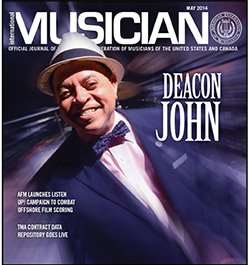
Deacon John Moore
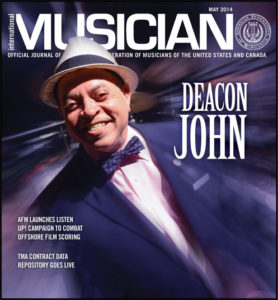 New Orleans’ Musical Chameleon and Passionate Union Advocate
New Orleans’ Musical Chameleon and Passionate Union Advocate
Deacon John Moore,72, president of Local 174-496 (New Orleans, LA) says he’s proud that he’s managed to make a comfortable living as a musician for his entire life. He credits his versatility, business sense, and union membership for much of his success.

